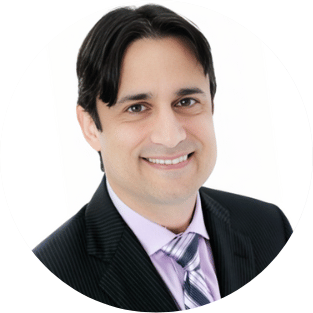
Transcending Epilepsy Care: Jason Lerner from Biohaven in an Enlightening Dialogue Exchange with PharmaShots
Shots:
-
Epilepsy affects around 1.5 million people in the US and 50 million globally. With approximately 40% of epilepsy patients being drug-resistant, there is an urgent need for innovative therapies
-
Today, at PharmaShots we have Dr. Jason Lerner from Biohaven shedding light on BHV-7000, an investigational anti-seizure treatment and selective activator of potassium channels in the brain, offering a promising option for drug-resistant epilepsy
-
Jason discusses the ongoing RISE Phase II/III clinical studies aimed at evaluating the safety, efficacy, and tolerability of BHV-7000 in patients with focal onset epilepsy
Saurabh: It has been a delight to learn that you have initiated a P-II/III clinical trial to investigate BHV-7000. On that subject, could you describe how BHV-7000 targets potassium channels in the brain to assist in treating epilepsy?
Dr. Lerner: Biohaven’s Rise clinical trials are national randomized, double-blind placebo-controlled Phase 2/3 studies to evaluate the efficacy, safety and tolerability of BHV-7000 in patients with focal epilepsy. BHV-7000 is an investigational treatment that works on a part of the nerve cells in the brain called potassium channels, which help balance the electrical activity in the brain. Activating potassium channels can stabilize overactive brain activity responsible for seizures. The proposed mechanism of action of BHV-7000 is different from other similar drugs in that it focuses on the potassium channel and avoids a different channel called GABAA, which may help it be better tolerated.
Saurabh: What led Biohaven to focus on developing BHV-7000 specifically for treating epilepsy?
Dr. Lerner: Approximately 1.5 million people in the US and 50 million worldwide have epilepsy.1,2 Although it is one of the most common neurological diseases globally, there is still an urgent need for more research, better treatments, and more support for people with epilepsy.2,3 Many patients experience uncontrolled seizures, which can severely impact their quality of life. This unmet need is what drives our commitment to developing new solutions for epilepsy. Our goal is to offer hope to those living with the burden of this disorder, especially those who have not responded to existing therapies. By focusing our efforts on innovative treatments, we aim to provide new possibilities for seizure management and ultimately improve the lives of patients and their families.
Saurabh: How does BHV-7000 differ from currently available anti-seizure medications regarding efficacy and side effects?
Dr. Lerner: Early research has shown BHV-7000 to be successful in treating seizures in preclinical studies. Our most recent research of BHV-7000 in healthy volunteers has found BHV-7000 to be well-tolerated, not causing some of the typical nervous system adverse effects like sleepiness seen with many other anti-seizure medications. We are hopeful that our investigational treatment can address significant unmet needs by offering a potential new option for individuals whose seizures are not adequately controlled with current therapies.
Saurabh: Can you elaborate on the design and objectives of the RISE clinical trial for BHV-7000?
Dr. Lerner: People enrolled in the Rise studies will take BHV-7000 or placebo once daily. Participants will have one baseline in-person clinic visit and then regular in-person monitoring at the trial site. The primary objective of the study is to determine the change from baseline in 28-day average seizure frequency. Participation in the Rise 2 trial will last for at least 5.5 months with 5 visits including an 8-week observation phase, 12-week double-blind study treatment
phase and 2-week follow-up phase. Participation in the Rise 3 trial will last for at least 4.5 months with 5 visits including an 8-week observation phase, 8-week double-blind study treatment phase and 2-week follow-up visit.
Saurabh: What are the inclusion criteria for participants in the RISE 2 and 3 clinical trials?
Dr. Lerner: We are recruiting people aged 18-75 who have been diagnosed with focal onset epilepsy for at least one year, have at least four or more observable focal seizures every 28 days, are considered to have drug resistant epilepsy and are currently being treated with a stable dose of at least one to three anti-seizure medications.
Saurabh: In your opinion, what are the most significant unmet needs in epilepsy treatment that BHV-7000 aims to address?
Dr. Lerner: Despite the advent of new treatments for epilepsy, a high unmet need remains unaddressed due to the tolerability of currently approved treatments and the fact that approximately 40% of people with epilepsy are drug-resistant.4 We recognize these gaps in care and are focused on addressing the most pressing unmet needs in epilepsy treatment. BHV-7000 is designed to activate potassium channels and avoid GABAA. By focusing on mechanisms that have been difficult to address with existing treatments, we aim to improve seizure control and quality of life for patients.
For more information about the trial and to find a study site, visit epilepsyresearchstudy.com.
References
1. Kobau R, Luncheon C, Greenlund KJ. About 1.5 million community-dwelling US adults with active epilepsy reported uncontrolled seizures in the past 12 months, and seizure control varied by annual family income-National Health Interview Survey, United States 2021 and 2022. Epilepsy Behav. 2024 May 30:157:109852. 2. World Health Organization. Epilepsy. Available at https://www.who.int/news-room/fact-sheets/detail/epilepsy. Accessed June 6, 2024. 3. Epilepsy Foundation. Facts and Statistics About Epilepsy. Available at https://www.epilepsy.com/what-is-epilepsy/statistics#:~:text=There%20is%20still%20an%20urgent,disease%2C%20and%20traumatic%20brain%20injury. Accessed June 13, 2024.
4. Ioannou P, Foster DL, Sander JW, et al. The burden of epilepsy and unmet need in people with focal seizures. Brain Behav. 2022 Sep; 12(9):e2589.
Image Source: Canva
About the Author:

Jason T. Lerner, MD
Dr. Lerner is a board-certified pediatric neurologist and epileptologist and was a Clinical Professor at the University of California, Los Angeles prior to joining Biohaven in the spring of 2022. At UCLA Dr. Lerner was the associate Child Neurology Division Chief and the Director of the Adolescent Epilepsy Center at UCLA. During his tenure he held many leadership positions including Director of the Pediatric Neurophysiology Lab and Director of the Child Neurology Residency Program and contributed to numerous clinical trials. He has published more than 35 articles and book chapters in leading journals such as Epilepsia, Neurology and the Journal of Clinical Neurophysiology. In his current role at Biohaven, Dr. Lerner is a Medical Director and clinical lead of the BHV-7000 development program in epilepsy.
After graduating from the New Jersey Medical School in 2000, Dr Lerner completed a residency in Pediatrics at the Penn State Health, Milton S. Hershey Medical Center, residency in Child Neurology at the Albert Einstein College of Medicine, Montefiore Medical Center, and fellowship in Pediatric Clinical Neurophysiology at UCLA.
Related Post: Enhancing Care with NK Cell Therapy: Fred Aslan from Artiva Biotherapeutics in Conversation with PharmaShots
Tags

Saurabh is a Senior Content Writer at PharmaShots. He is a voracious reader and follows the recent trends and innovations of life science companies diligently. His work at PharmaShots involves writing articles, editing content, and proofreading drafts. He has a knack for writing content that covers the Biotech, MedTech, Pharmaceutical, and Healthcare sectors.














